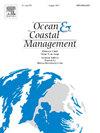绿色航运走廊:太平洋西北地区及重点港口概览
IF 4.8
2区 环境科学与生态学
Q1 OCEANOGRAPHY
引用次数: 0
摘要
太平洋西北至阿拉斯加绿色航运走廊(GSC)是沿世界上最活跃的邮轮航线之一向脱碳海上运输迈出的关键一步。本研究对温哥华、西雅图、鲁珀特王子港和朱诺四个主要港口的可持续发展工作进行了全面评估,分析了它们的减排战略、岸电采用、替代燃料倡议和区域合作努力。采用混合方法,将港口可持续发展报告、政策和行业框架的定性分析与温室气体(GHG)排放和岸电利用的定量数据相结合。研究结果表明,温哥华和西雅图港口在岸电部署和政策调整方面处于领先地位,而鲁珀特王子港和朱诺港则面临阻碍完全脱碳的基础设施和监管挑战。虽然GSC提供了有价值的案例研究,但太平洋西北GSC需要加强跨境协调、财政激励和基础设施扩张,以加速向低碳海上运营的过渡。本研究确定了关键的技术、经济和政策障碍,同时为包括政策制定者、港务局和行业领导者在内的利益相关者提供战略建议。该研究强调了替代燃料的潜力、岸电的作用以及为实现可行的绿色走廊而协调监管框架的必要性。最后,本文有助于更广泛地讨论可持续海上运输,强调需要多方利益相关者的方法来实现航运业的净零排放目标。本文章由计算机程序翻译,如有差异,请以英文原文为准。
Green shipping corridors: An overview of Pacific Northwest region and key ports
The Pacific Northwest to Alaska Green Shipping Corridor (GSC) represents a crucial step toward decarbonizing maritime transportation along one of the world's most active cruise routes. This study conducts a comprehensive assessment of sustainability efforts at four key ports - Vancouver, Seattle, Prince Rupert, and Juneau - analyzing their emission reduction strategies, shore power adoption, alternative fuel initiatives, and regional collaboration efforts. A mixed-methods approach is employed, integrating qualitative analysis of port sustainability reports, policies, and industry frameworks with quantitative data on Greenhouse Gas (GHG) emissions and shore power utilization. The findings indicate that Vancouver and Seattle ports lead in shore power deployment and policy alignment, whereas Prince Rupert and Juneau ports face infrastructural and regulatory challenges that hinder full decarbonization. While GSCs provide valuable case studies, the Pacific Northwest GSC requires enhanced cross-border coordination, financial incentives, and infrastructure expansion to accelerate the transition to low-carbon maritime operations. This research identifies key technological, economic, and policy barriers while providing strategic recommendations to stakeholders, including policymakers, port authorities, and industry leaders. The study highlights the potential for alternative fuels, the role of shore power, and the necessity for harmonized regulatory frameworks to achieve a viable green corridor. Ultimately, this paper contributes to the broader discourse on sustainable maritime transportation, emphasizing the need for a multi-stakeholder approach to achieve net-zero emissions goals in the shipping industry.
求助全文
通过发布文献求助,成功后即可免费获取论文全文。
去求助
来源期刊

Ocean & Coastal Management
环境科学-海洋学
CiteScore
8.50
自引率
15.20%
发文量
321
审稿时长
60 days
期刊介绍:
Ocean & Coastal Management is the leading international journal dedicated to the study of all aspects of ocean and coastal management from the global to local levels.
We publish rigorously peer-reviewed manuscripts from all disciplines, and inter-/trans-disciplinary and co-designed research, but all submissions must make clear the relevance to management and/or governance issues relevant to the sustainable development and conservation of oceans and coasts.
Comparative studies (from sub-national to trans-national cases, and other management / policy arenas) are encouraged, as are studies that critically assess current management practices and governance approaches. Submissions involving robust analysis, development of theory, and improvement of management practice are especially welcome.
 求助内容:
求助内容: 应助结果提醒方式:
应助结果提醒方式:


